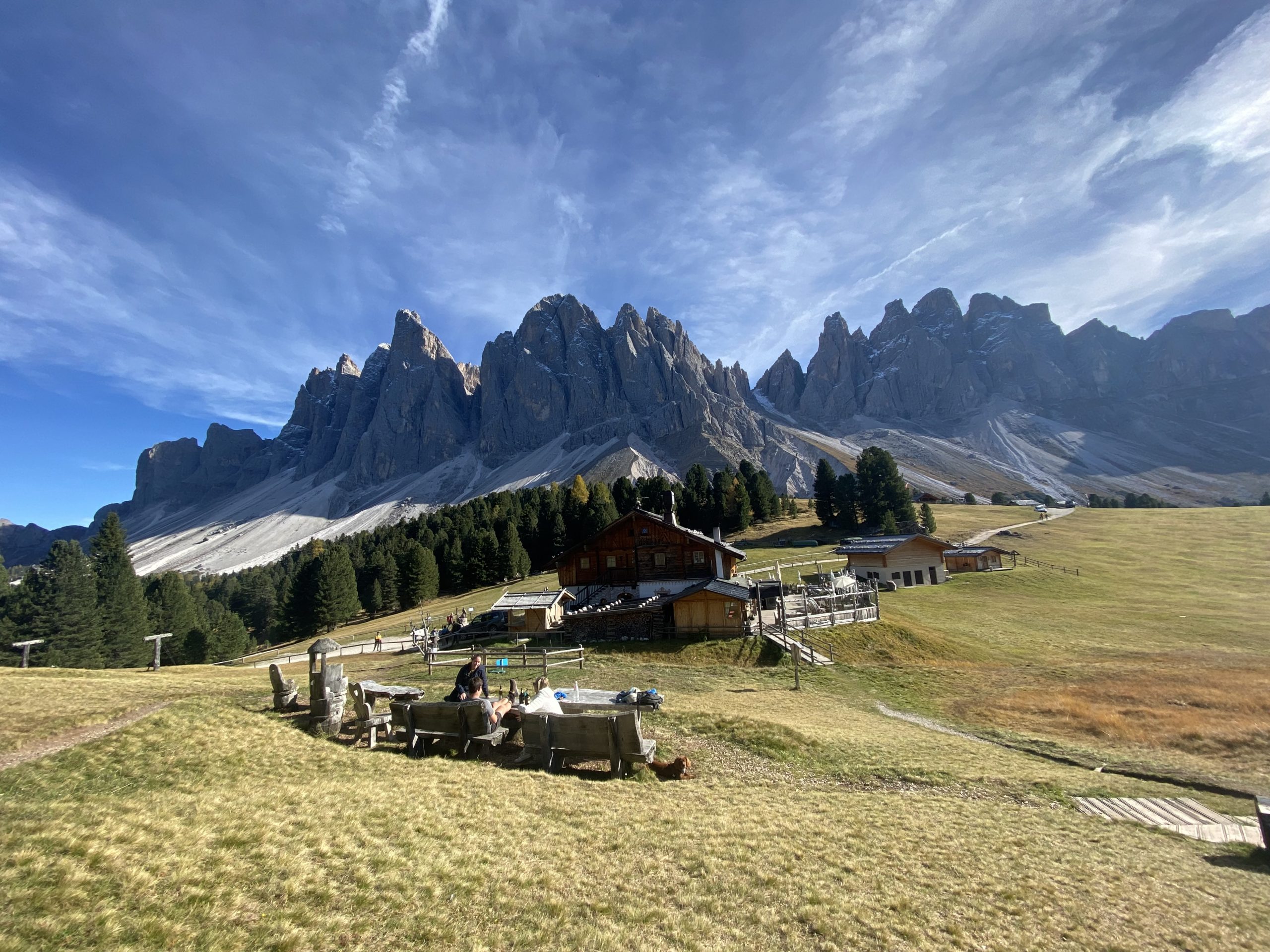
Dolomites
Getting there
The Dolomites are part of the Alps, but typically referred to by name, and run through the NE part of Italy passing through the regions of Trentino-Alto Adige, Veneto, and Friuli-Venezia Giulia. The area itself is known to be in South Tyrol, and often feels more like you are in Austria than in Italy. This is largely due to the architecture spread across the Dolomites, the language spoken and the cuisine choices. Many restaurants have the cozy Austrian feel and serve food like schnitzel, a variety of meats, goulash, and a famous apple strudel. However, Italian cuisine influence is not gone as most places offer a variety of pasta options, serve bread at the beginning of the meal, and have both a local selection and wider Italian selection of wine.
Accessing the Dolomites will require more effort than just simply flying into a city. The closest cities with airports (or train stations) include Venice (2-3 hours), Innsbruck (1.5 – 2 hours), Munich (3 – 4 hours), Verona (1.5 – 3 hours), and Bolzano (1.5 – 2.5 hours). From these airports, the easiest way to get to the Dolomites will be by renting a car.
Getting Around
The Dolomites is easiest done with your own vehicle so plan on renting a car. Plan on picking up a rental car after arriving in the larger city. From here, make your way to the mountains. When renting a car, there are a few aspects to know in advance. The roads in the Dolomites are winding with sharp hairpin turns. The roads can also be quite thin in some areas and occasionally you will be surprised it is a two way road. Fortunately, the roads are in very good condition and there are safety barriers in locations where cliff edges are a factor.
For those that are new to the Dolomites, these roads can feel quite challenging. Knowing the roads can be tough, if visiting in the warmer summer months, plan on renting a small vehicle. This will provide you more comfort on the tighter roads. It also makes parking easier in different locations. A larger vehicle will be more difficult to drive on the new, challenging roads and is not necessary.
It is unlikely you will drive the speed limit, and instead drive much slower, meaning you should always plan extra time into drives. The locals will drive faster so do not be bothered by these folks passing you on the road. Instead, take it slow and enjoy the beautiful scenery around you on the drives. Even though the roads can be tough, the drives offer some spectacular views themselves. There will be many times you will want to pull over and take-in the view or stop at a cute restaurant or café on your route for a break and opportunity to enjoy the area.
If you are very against renting a car, there are opportunities to take buses from the larger cities you’ve arrived in and then depend on the buses in the region to travel between towns and to hikes or other activities planned for your holiday. Keep in mind, if you choose not to rent a car, you will have a lot less flexibility in your itinerary and be heavily dependent on public transit.
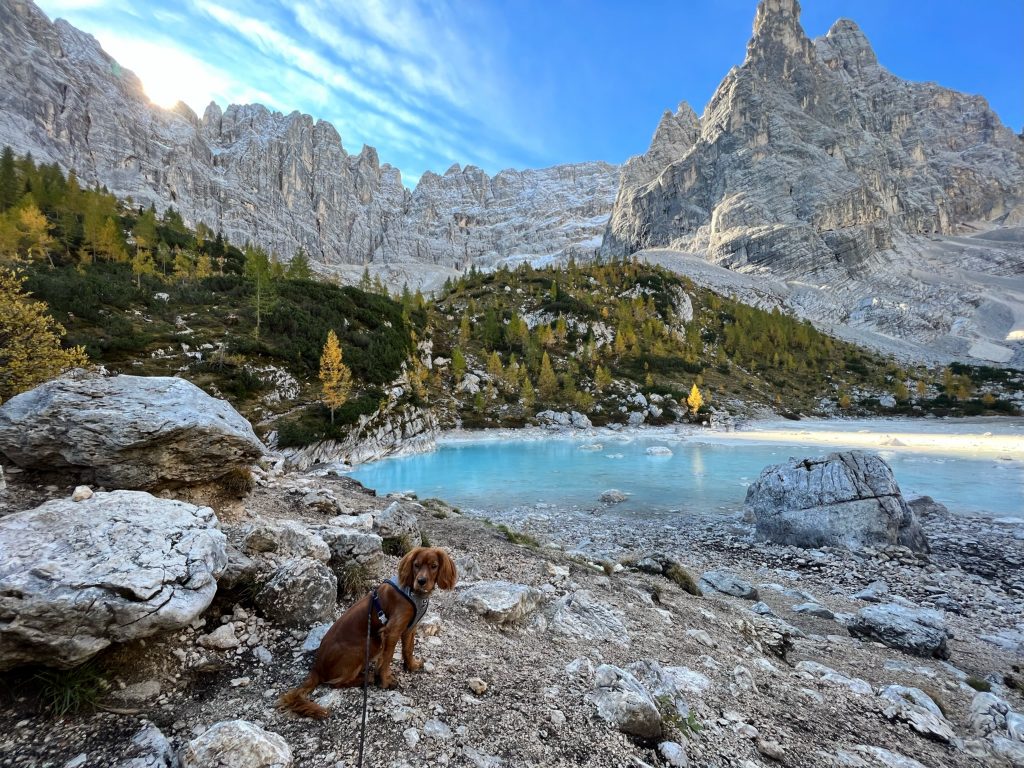

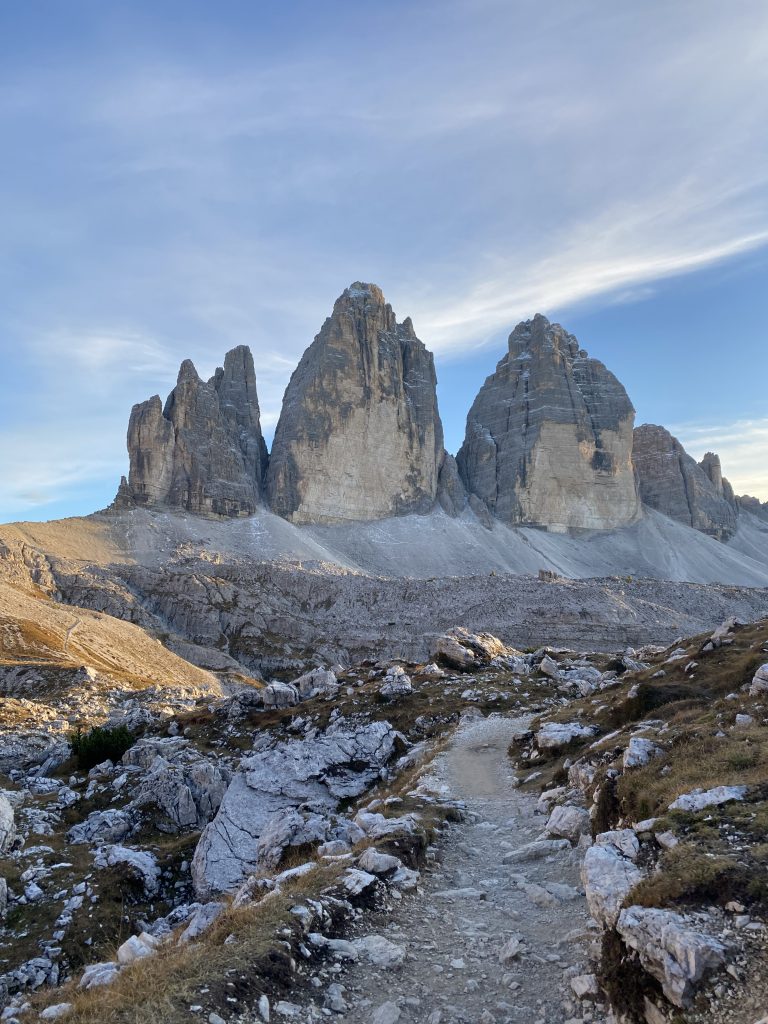
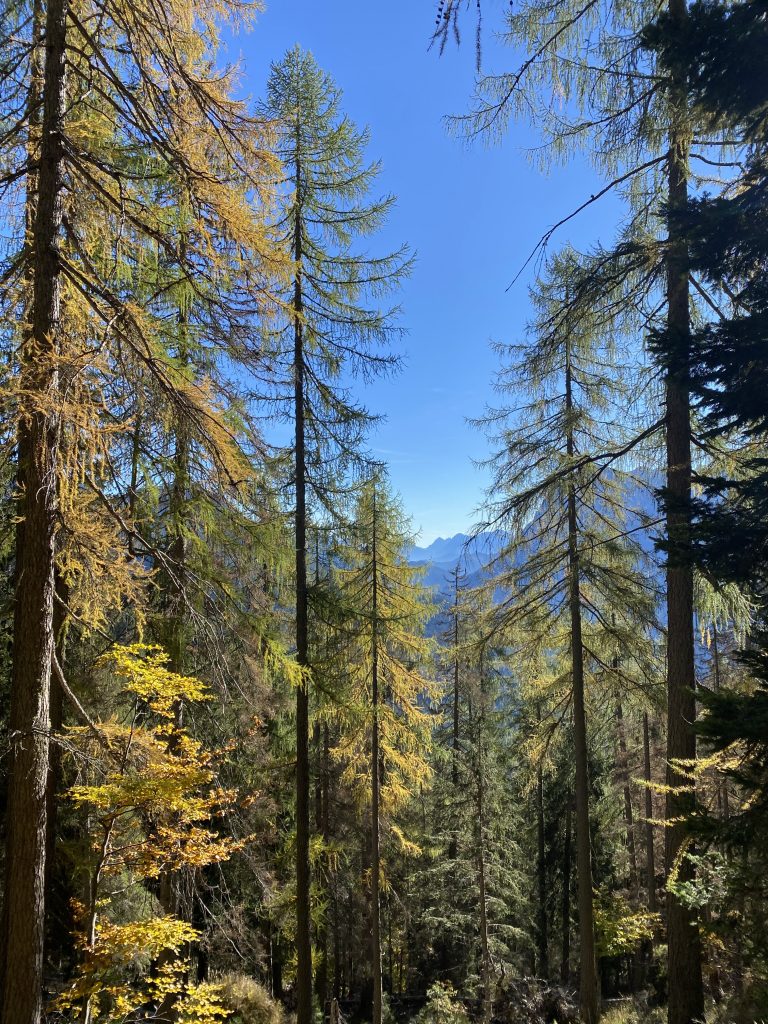
Accommodations
The Dolomites covers a large region and includes multiple different valleys including Val Gardena, Val Badia, Val di Fassa, Cortina d’Ampezzo, and Livinallongo. Since there is so much to explore, with many different towns, it can be overwhelming when trying to determine where to stay. Where to stay will largely be driven by what you would like to do, what type of accommodations interest you, and how long you plan to spend in the Dolomites.
Accommodation Types:
Like many travel destinations, the Dolomites have a variety of traditional accommodation options including hotels, bed & breakfasts, and other rental options. Something more unique about the Dolomites is the option to stay in accommodations called Rifugios. Technically, camping is not permitted in the Dolomites. However, the Rifugios help fill this void for campers and even for non-campers as it allows hikers to stay in the mountains.
Rifugi means mountain refuge, and a rifugio is a high-elevation mountain hut sitting on a hiking trail. Within the Dolomites, there are over 1000 rifugios which open their doors to hikers between June and September. Rifugios will not be for those looking for lavish and luxury accommodations. Instead, they generally have small rooms only providing the necessities. Bathrooms are typically shared by guests, and showers will be available but sometimes for an additional cost. Often at rifugios, the hosts offer half-board options which includes dinner or breakfast. Similar to the old fashion, simplistic style of rifugios, booking rifugios is also not standardised. To book many rifugios, you will need to contact the hosts via email or calling the property directly. Be sure to book in advance, and also note when the rifugios close. Although it is possible the weather will be nice in the shoulder season (May and October), many rifugios will not have their doors open at this time. Thus, if you would like to explore the Dolomites and experience the rifugios, be sure to keep this in mind when planning your trip.
There are a few key points to keep in mind when booking rifugios. Many rifugios will expect you to have your own sheets, which can be a proper bedsheets or a sleeping bag. After reading the above and seeing how old fashioned the rifugios can be, it should not surprise you that some accommodations will only accept cash. Therefore, be sure to bring enough cash to cover any of your rifugio stays. Although some may be closer to towns than others, it is best to have cash on you to cover your accommodation expenses. Do not expect wifi to be available, and sometimes cell phone service also will not be available. It is also a good idea to have a re-chargeable battery pack. This will provide you with more flexibility if your electronics do not have long battery life and / or if electricity is only partially available at your accommodations.
Locations
The Dolomites is a vast region with many options on areas to stay. With a quick trip, you will want to focus on a few key areas and plan to come back for a longer visit another time. For a longer visit, you may be able to take advantage of the different areas, planning time in or around each location. The below areas are helpful to know when starting to think about where to stay on a visit, with notable sites, hikes or towns noted for each.
Val Pusteria: Tre Cime di Lavaredo, Lago di Braies
Val Badia: Corvara, Passo Gardena
Val Gardena: very famous area in Dolomites on the other side of Passo Gardena from Val Badia; main towns include Ortisei, Selva, and Santa Cristina
Val di Fassa: Marmolada massif
Val di Funes: small valley part of the Puez-Odle National Park, chapel of Ranui
Cortina d’Ampezzo: a more glamorous and upscale area in the Dolomites with elegant hotels, luxury shops, and overall fancier area
Misurina: home to Lake Misurina and easy access to hikes including Lago di Sorapis and Tre Cime di Lavaredo
For first time visitors, I would recommend planning a week in the Dolomites. The ideal would be to stay in some or all rifugios. However, if not possible or not your vibe, consider using Cortina d’ Ampezzo and Ortisei as home base cities. When staying in Cortina, Val Pusteria is within short driving distance (less than 1.5 hours), allowing you to access key hikes including Tre Cime di Lavaredo and the instagram famous Lago di Braies. The hike to Lago di Sorapis is also easily accessible from Cortina.
As a second home base location, consider a town in Val Gardena. Ortisei, Selva, and Santa Cristina are the three main towns found in Val Gardena. Ortisei is the largest of the three towns, with Selva and Santa Cristina both feeling smaller. Staying in any of these three towns will provide you easy access to Alps di Siusi, Val di Funes, the Seceda Ridgeline, and to Lago di Carezza.
When transitioning from Cortina d’ Ampezzo to Ortisei, there will be a spectacular drive with stunning views along the whole drive. That being said, it is a challenging drive with winding roads and sharp turns; take it slow, pull over on the side of the road at viewpoints and just enjoy the drive. As you depart Cortina d’ Ampezzo, you will pass through Val Badia on one side of Passo Gardena, before you then reach the other side and enter Val Gardena. At this point you will continue onward towards Ortisei until you reach your destination.
Things to do and see
Hiking
Tre Cime di Lavaredo
Distance: approx. 6 miles
Length of time: 2 – 3 hours (with breaks)
Rating: 10
Elevation: 1200 ft
Trail type: loop
Easily accessible from Cortina d’ Ampezzo
What makes this hike so special is hiking it at sunset (if possible), but noting it is important to plan enough time and consider bringing headlamps incase the trail takes longer than expected.
For this hike, you will enter the Tre Cime di Lavaredo National Park. Upon entry, the cost for parking is steep at 30 euros for the day. After paying, continue on the road until you reach the Rifugio Auronzo which marks the beginning of the loop trail. The trail can be done clockwise or counterclockwise. If looking to complete this hike around sunset, consider hiking counterclockwise. This is largely because if you are still on the trail after the sunsets, you will have light longer at the end of the trail than if done clockwise as the sun will be to your right when hiking counterclockwise and the higher parts of the mountain remain to your left.
The hike starts at Rifugio Auronzo. If choosing to hike counterclockwise, head to the Rifugio and continue past the Rifugio onto the trail towards Rifugio Lavaredo. If choosing to hike clockwise, walk away from Rifugio Auronzo further into the parking lot until you reach the trail. In this instance, you will have the larger mountain next to you directly on your right.
Here I will note the key points of interest for a counterclockwise hike. First head to the Rifugio Auronzo and follow the trail past the Rifugio towards Rifugio Lavaredo (path #101). As you walk on the straight path you will have spectacular views around the surrounding mountains. Shortly ahead of you, you will see a very small church. Continue past the church where you will soon be able to see Rifugio Lavaredo. Depending on the time of year you are visiting, the Rifugio will likely be open where people will stay for an evening. After you pass the Rifugio, the trail will turn and climb upwards. Continue to follow path 101, now following signs towards Rifugio Locatelli.
Hike up the hill where you will head straight for the famous Tre Cime rock formations. As you near the top, you will take a right and take the left path downward. This path will continue towards Rifugio Locatelli. Walk along the flatter path and look backward as the views of Tre Cime become more impressive. You will see Rifugio Locatelli as you approach it. If looking for a longer route than noted above, you can hike up to Rifugio Locatelli and do a small loop to see a lake. Our route did not include the incline to the Rifugio Locatelli and instead continued on the path towards Rifugio Langalm, switching to now follow path #105. From under Rifugio Locatelli, the walk to Langalm is noted as 1h 20. From Langalm, it will be another 30 – 40 minutes to the end point. Keep this in mind when factoring in sunset timing.
The path towards Langalm heads straight down into the bottom of a valley, which you will then proceed to climb back up. At the top of this climb offers some spectacular views of the surrounding mountains. If visiting at sunset, watching the sun illuminate the sky and mountains is gorgeous here. Continue walking along the trail towards Langalm. Once you reach Langalm, the signs note another 40 minutes back to Rifugio Auronzo. Make your way back along the loop path until you reach a fence that you will need to go through. Here there are some steep edges so watch your step and be cautious, especially in the dark. Continue in the counterclockwise direction until you approach Rifugio Auronzo again where you will need to walk back through a large parking lot to approach your starting destination.
Rifugios along the route to consider booking for an evening – staying at one of these (esp. 2 and 3) will give you prime access to spectacular sunsets. If staying at 2 or 3, you can plan to do part of the hike to arrive at your accommodations, stay the evening and watch the sunset, and finish the hike the following morning when you depart.
-
-
- Rifugio Auronzo
- Rifugio Lavaredo
- Rifugio Locatelli
- Rifugio Langalm
-
Lago di Sorapis
Distance: approx. 7.2 miles
Length of time: 2.5 – 4 hours (with breaks)
Rating: 10
Elevation: 1400 ft
Trail type: out and back
Easily accessible from Cortina d’ Ampezzo
Lago di Sorapis is a beautiful alpine lake with a cloudy light blue color. In order to reach this lake, you must hike there. The trailhead is located at Passo Tre Croci near the B&B Hotel Passo Tre Croci Cortina. If traveling from Cortina, the trailhead will be on your right. There is a very small parking lot across from the hotel and also some street parking available. Once you find the trailhead, head through the gate and down the wide, flat path. A point to note – initially follow signs for path #215 towards Rifugio Vandelli.
The path starts out quite easy and in the wooded area. As you continue on the hike, you will pass over a small water bed with a tiny waterfall on your rights. Cross the stones and continue on the path up. The path will continue on a gradual incline until you reach about 2.4 miles on the trail where it will then turn into a steeper climb. The panoramic views will also be incredible from here as you can see lots of the surrounding area on a clear day. The route will get a bit more technical past here.
There will be an iron rope on the wall to support in climbing some of the steeper stone area and some manmade stairs for a few stories. Then you will continue on the stone path. The path will continue to be technical in times, and you will soon hit another spot where there is an iron rope on the wall. The drop from here is high, but the path is wide enough to feel secure. Do not rush on this part. Continue back onto the wider path no longer on a steep ledge towards the lake. Follow the path towards Rifugio Vandelli, continuing straight upwards rather than the right path. You will shortly see the rifugio which is just short of Lago di Sorapis. Rather than now going towards the rifugio, follow the path to Lago di Sorapis and you should be greeted by the lake in minutes.
The lake sits with a beautiful mountain backdrop. It is especially special to get here around lunch. If lucky enough to arrive before the sun has hit the water, you will be able to see the lake become illuminated in sunlight which leaves it a beautiful breathtaking light blue color. Plan to pack a lunch, and maybe a drink if you fancy, to sit and enjoy the natural beauty in front of you.
Once you are ready to get on your way, begin your hike again. This path, and my recommended route, would be to take the same route back down as you climbed up. Although an out and back hike, the views especially in the portion immediately following your turning point are rewarding. On your way up, your back would’ve been to these views, and now you get the opportunity to take in the views head-on. Note the route is quite technical, which we found actually to be somewhat more challenging on the way down. Watch your step and enjoy the journey down from the Lake.
Lago di Braies
Known as a famous lake in the Dolomites, Lago di Braies draws in all forms of visitors. This is largely due to its location as it can be reached within minutes from the parking lot, and therefore allows people who are less mobile or interested in active adventures to visit the lake. With easier access brings larger crowds. In the summer, it is common to have large crowds of people coming out to photograph the lake or take a boat on the water. Regardless if visiting in the peak summer season or quieter off season, try to visit Lago di Braies earlier in the morning. The lake is especially beautiful with the mountain reflecting in the clear, quiet water. Although touristy, the lake is beautiful and picturesque so if in the area or happy to get up early for an early morning drive to see the lake, it is worth a stop.
If you would like to spend longer at the lake, you can choose to hike around the lake or on trails in the area. Additionally, you can rent a boat and take the boat out on the peaceful water. For me, a short walk along the water in the early morning with a coffee was a perfect amount of time for a visit to Lago di Braies.
Part of Val Pusteria, but easily accessible from Cortina d’ Ampezzo (about a 70 minute drive each direction)
Adolf Munkel trail
Distance: approx. 6.8 miles
Length of time: 2 – 3 hours (with breaks)
Rating: 9
Elevation: 1500 ft
Trail type: loop
Part of Val di Funes, but very easily accessible from towns in Val Gardena (Ortisei, Selva, and Santa Cristina)
The Adolf Munkel trail is a commonly travelled trail and provides stunning views of some of the Dolomite peaks around. This trail is best done with the Geiser Alm stop in the second half meaning you walk clockwise along the Adolf Munkel trail. This is important as the area in Geiser Alm is a great place to stop for lunch, enjoy a drink, and just enjoy the incredible view of the mountains at this spot. It is ideal to arrive here in the early afternoon as the sun illuminates the mountains with the afternoon light.
From the Zanser Alm parking lot, follow path 6 pointing towards Tschantschenun which heads towards Geisler Alrm and Rifugio delle Odle. Immediately, the mountains will be visible with a nice view on your right. As you approach a bridge on your right, cross the bridge and continue in the direction of path 35 towards Geisler Alm / Rifugio delle Odle. Stay on path 35 until it veers right up or straight. Take the path to the right on route 36 towards Gschnagenhardt Alm. Trail 36A is a more direct route to Geisler Alm / Rifugio Delle Odle.
Soon you will reach the highest point of the hike and have panoramic views around. Look out into the distance and see rolling mountains, or turn around to the massive Dolomite peaks behind you. Continue down the hill where you will see Rifugio Gschnagenhardt-Alm. Stop here for a drink or bite to eat if you fancy. I can recommend both the apple pancake and beef goulash. There are also chairs set out facing the peaks. At this Rifugio, you often will run into an old man playing the accordion.
If you choose not to stop here, continue past the first Rifugio, Gschnagenhardt-Alm, to Rifugio dell Odle. This is just a few minutes and can be seen from the Rifugio Gschnagenhardt-Alm. Rifugio dell Odle has a large outdoor seating area for the restaurant and also has seats on the hill behind facing the large peaks. This is one of the most spectacular and iconic views. Enjoy a sunny afternoon taking in the fantastic views here, almost like an alpine resort. Once you wrap up your time here, the remaining portion of the loop hike is about 2 miles and takes about 40 – 60 minutes. As you continue on the path back towards the start, you will pass another Rifugio which also has food and drinks available. If you fancy, make a stop here too! Before you know it, you will be at the end of this loop hike
Santa Magdalena church
Santa Magdalena is the main town in Val di Funes, and offers incredible views of the Geisler mountain range. Santa Magdalena church provides an iconic photo spot drawing many to the Dolomites.
Part of Val di Funes, but very easily accessible from towns in Val Gardena (Ortisei, Selva, and Santa Cristina)
Alps di Siusi
The Alps di Siusi, also known as Seiser Alm, is the largest high-alpine mountain plateau in Europe. It includes 52 sq. km of land with 450 km of hiking trails and is well above sea level. When exploring the mountain plateau, it leaves you feeling like you are lost in the Sound of Music. Depending on where you are staying will impact how you choose to get here.
From Ortisei, you can catch the Ortisei – Alps di Siusi gondola (Mont Seuc Gondola). A one-way gondola ticket up costs around 16 euros and a one-way gondola ticket down costs around 16 euros, with a roundtrip option at 24 euros. The ticket office will also ask if you would like to purchase a ticket for the chairlift for 5 additional euros. For flexibility, we would recommend purchasing this ticket as it may be nice to take the chairlift up the hill back to the gondola after you have hiked in the area.
If you prefer a challenge, you also have the option to hike up from the town, but it will be quite a steep incline.
Seceda Ridgeline
The Seceda Ridgeline can be reached by taking a long hike, or using the Seceda Cableway. A roundtrip ticket with the cableway costs approximately 27 euros. First you will take a gondola up the mountain, and then switch to a cable car where you will get off and head towards the Seceda Ridgeline. The Seceda Ridgeline viewpoint is only about a 10 minute walk from the top of the cable car. If you used the cable car to come up, plan to spend additional time up here hiking in the area. Although expensive to come up just to see the Seceda Ridgeline, it is quite a spectacular view. On clear days, you will also be able to have panoramic views of the surrounding areas, which includes visibility of the Austrian Alps.
Alternatively, if you are feeling adventurous, look into paragliding. Some companies will offer paragliding tandem rides from the top of Seceda. This provides a great opportunity to go up and see the Seceda Ridgeline, and then fly down with a trained paragliding instructor to see the surrounding areas at a birds’ eye view.
Lago di Carezza
Another famous lake which is possible to drive up to rather than hike to reach, Lago di Carezza is a beautiful emerald green lake. At the main viewing point, the mountains behind it reflect into the lake. When visiting, plan to walk around the lake. It is quite small and only takes about 20 minutes, but provides a nice way to see the lake from different viewpoints and enjoy the scenery.
When visiting, paid parking is available across the street with a fairly large parking lot.
Part of Val d’Ega, but easily accessible from Ortisei (about a 70 minute drive each direction)
Paragliding
If you are an adventure seeker and want a different viewpoint of the Dolomites, consider taking a tandem paragliding flight. When paragliding, you will likely meet your pilot at the bottom of a gondola and head to your take-off point. The take-off point is usually a steep hill. The pilot will set-up the parachute along the side of the hill. Once ready, you will be hooked together and to the parachute. Then you will start running down the steep hill, and quite quickly, you will be flying. At this point, you will be soaring above and have a new vantage point of the Dolomites.
Fly2 offers paragliding from Ortisei with a few different options for flight types available. I would recommend taking a flight for 20 – 25 minutes. This is enough time to enjoy the flight and take in the views.
Via Ferrata
This is a type of climbing, which literally translates as “iron treks”. It is a protected climbing route where iron cables are set up along the route, which climbers then use to clip in and out of while completing the trek. The Dolomites have a lot of via ferrata routes. For those who have tried it before, you can try out different routes or opt to book with a guide. If you are new to via ferrata, be sure to book with a guide first to show you how it is done and take you along a route.
Catores has a variety of options for guided via ferrata routes. Check out options available on the website or stop inside their office in Ortisei. They also offer a lot more options than just via ferrata, including climbing, guide hikes, snowshoeing, ice climbing, and more.
E-biking
As a mountainous area, the Dolomites will be challenging to cycle through. Consider renting e-bikes to explore on two wheels. Although many of the roads might not be ideal to cycle on, there are other areas where biking is nice. Try cycling the Sella Ronda which is a well-known ski loop if you are up for a longer ride as it is just over 50km.
Towns
The Dolomites has lots of little, charming towns spread throughout the region. Ortisei, Cortina d’Ampezzo, Selva, Santa Cristina, and Corvara are just a few of the many towns. Be sure to explore some while visiting, whether it includes stopping through for a coffee, grabbing an afternoon drink on a terrace, shopping, or enjoying a nice evening meal.

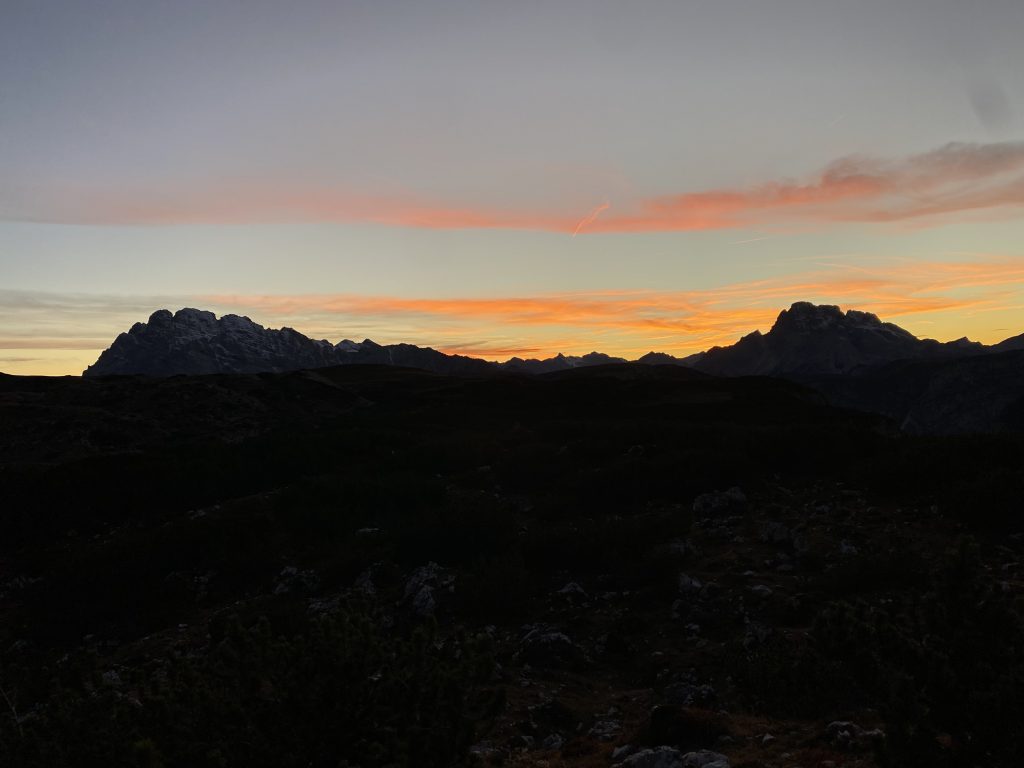
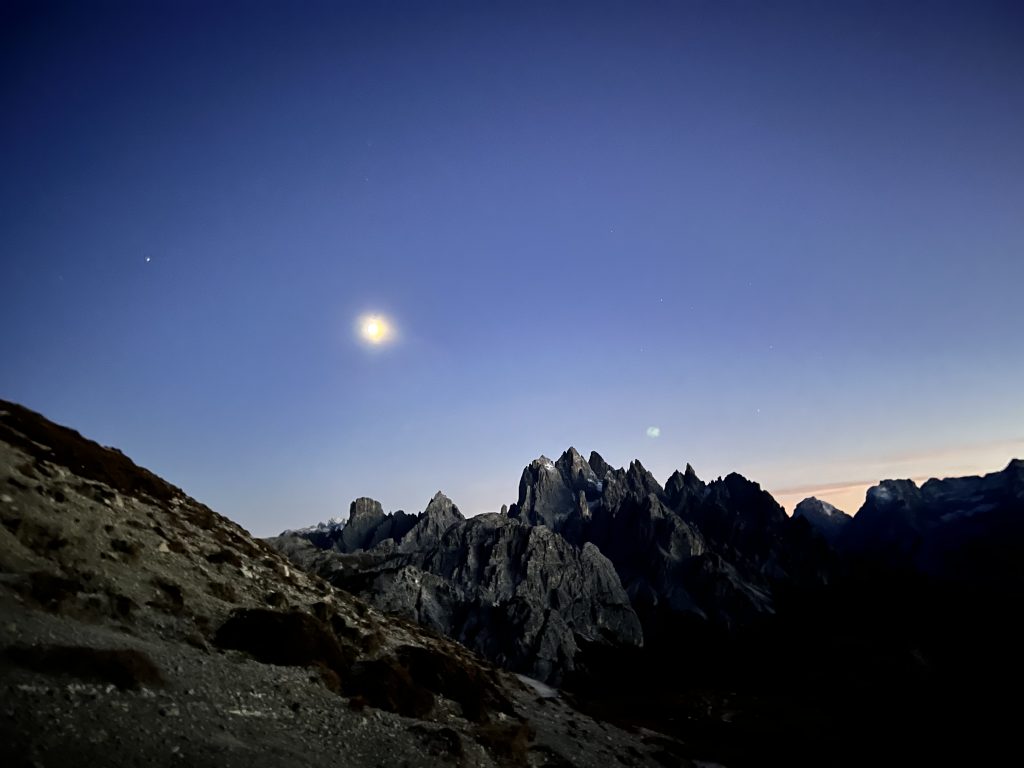
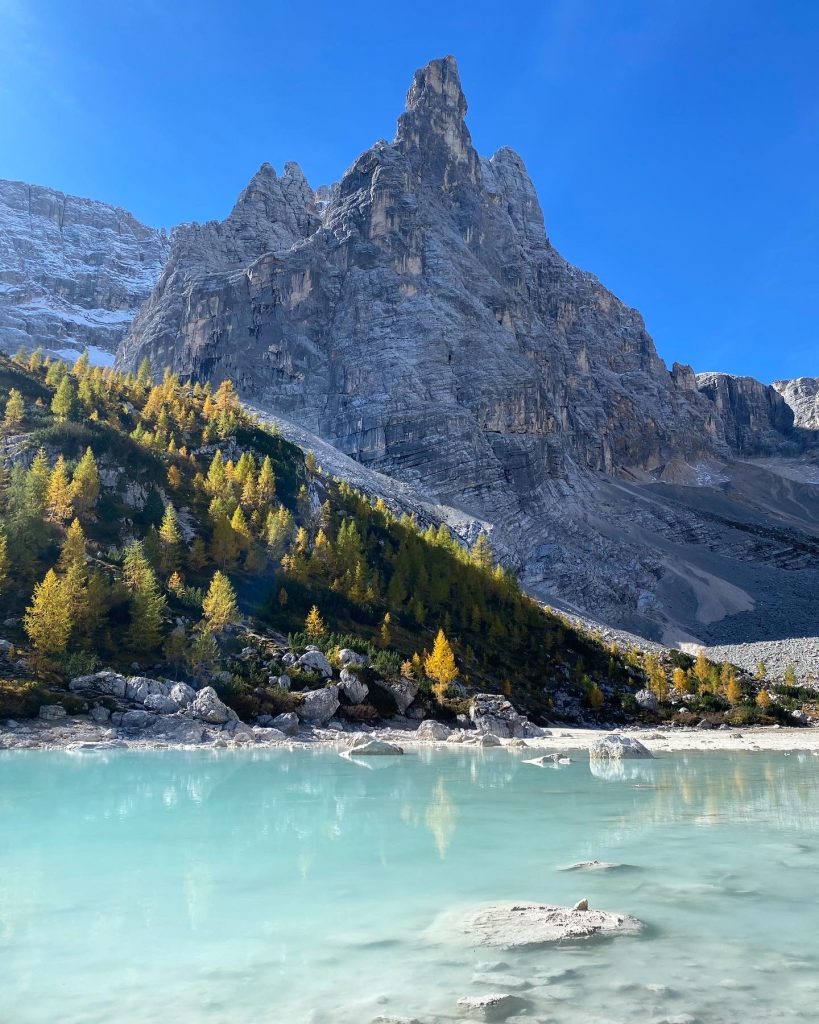
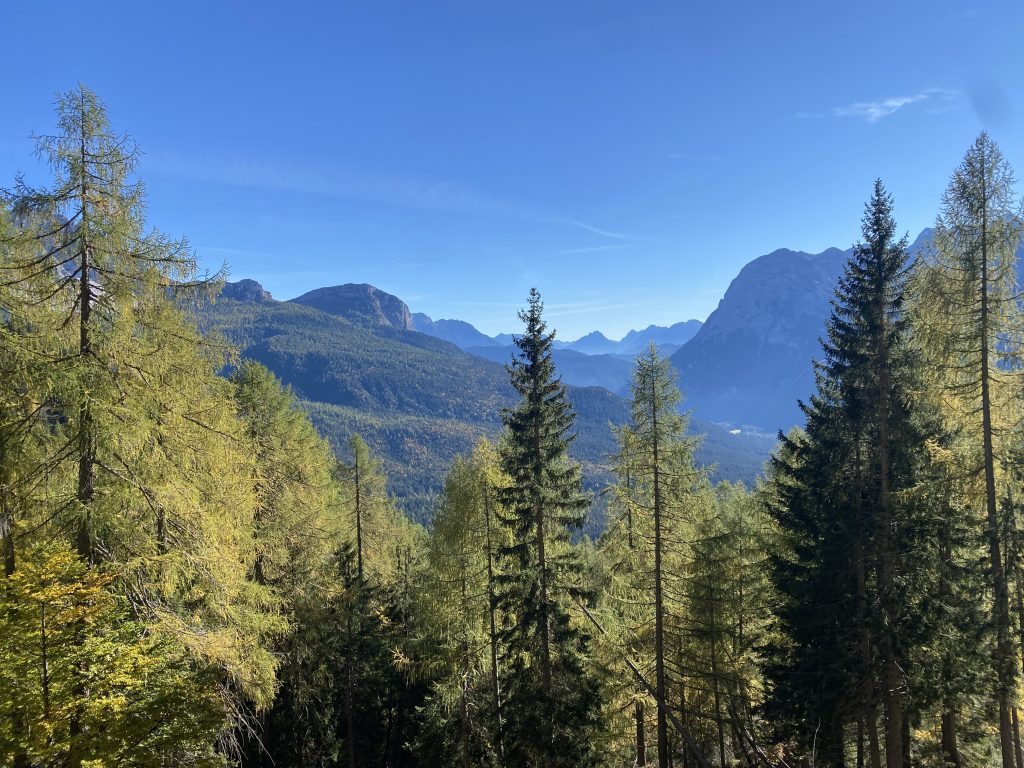
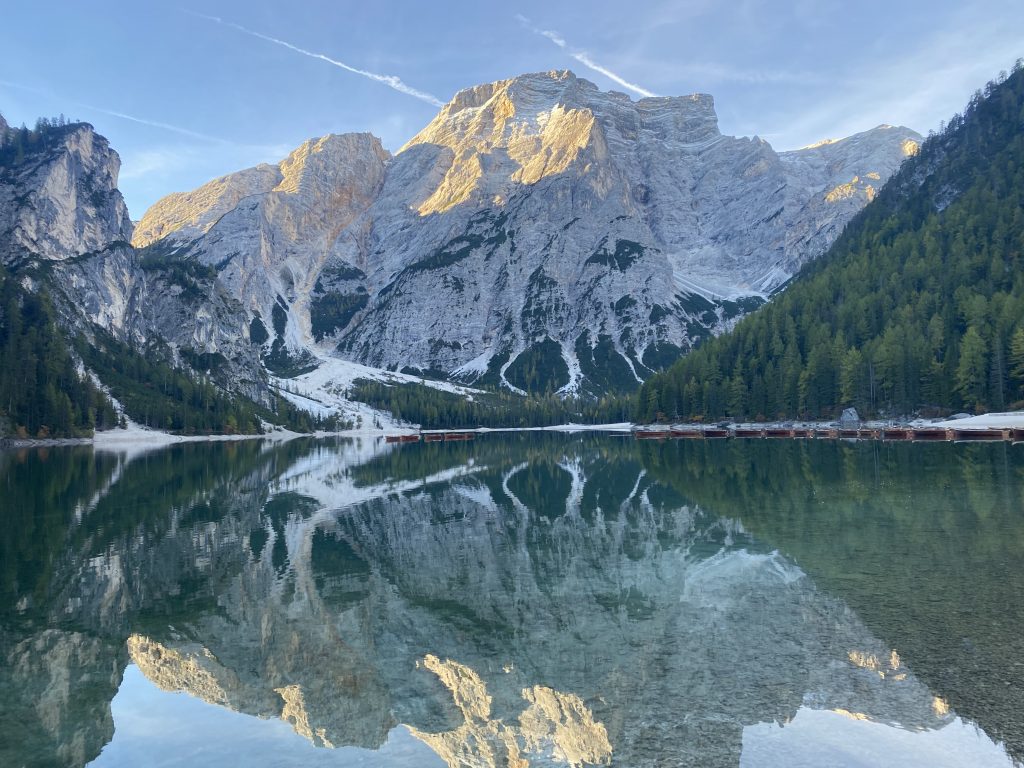

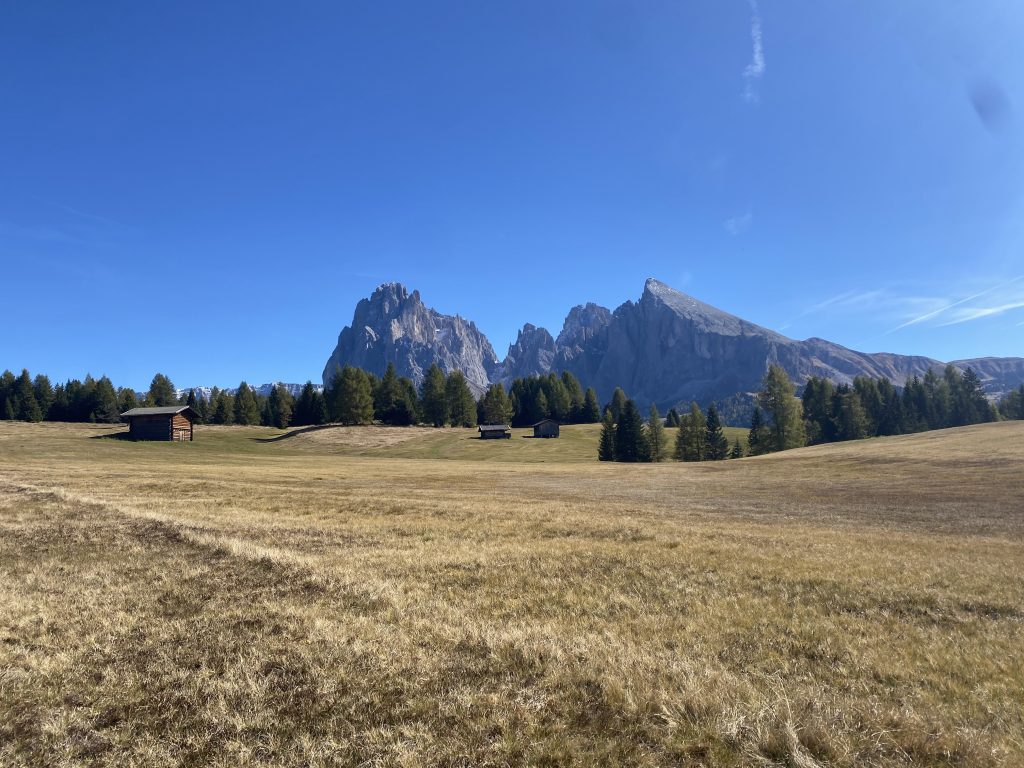
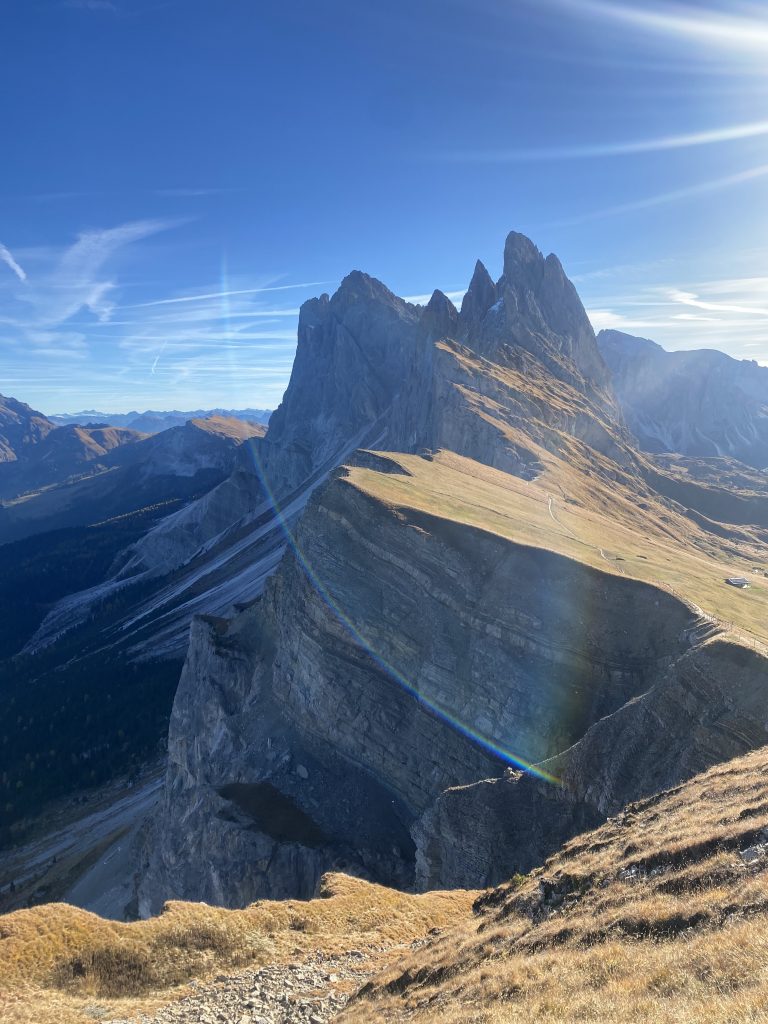
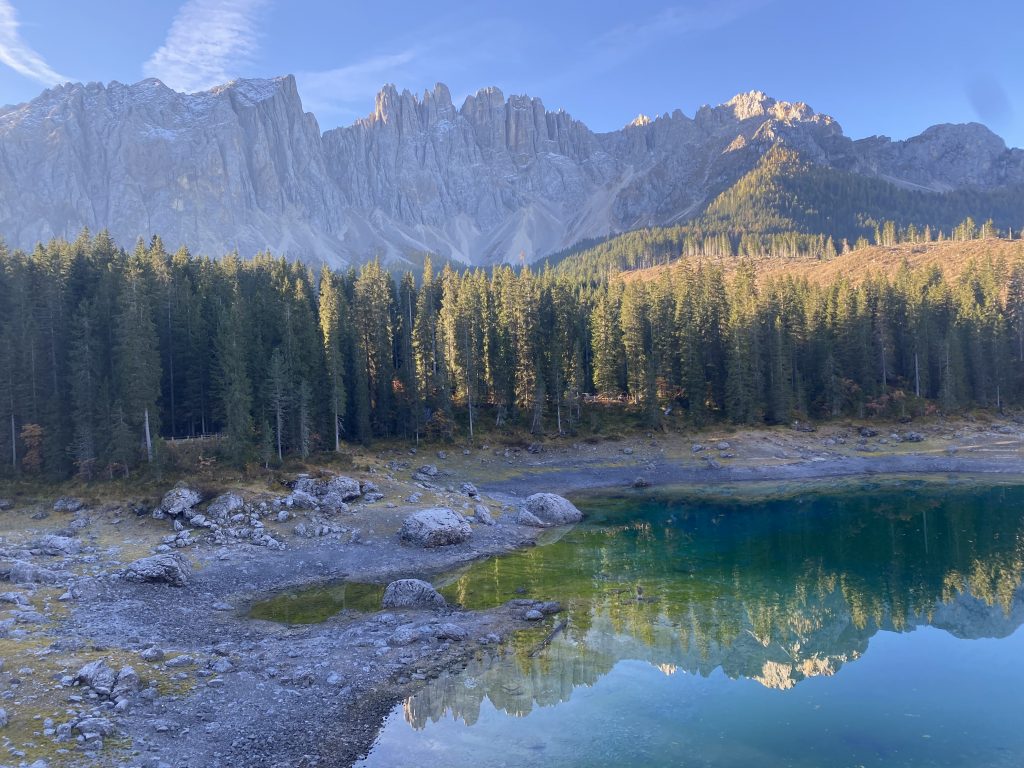
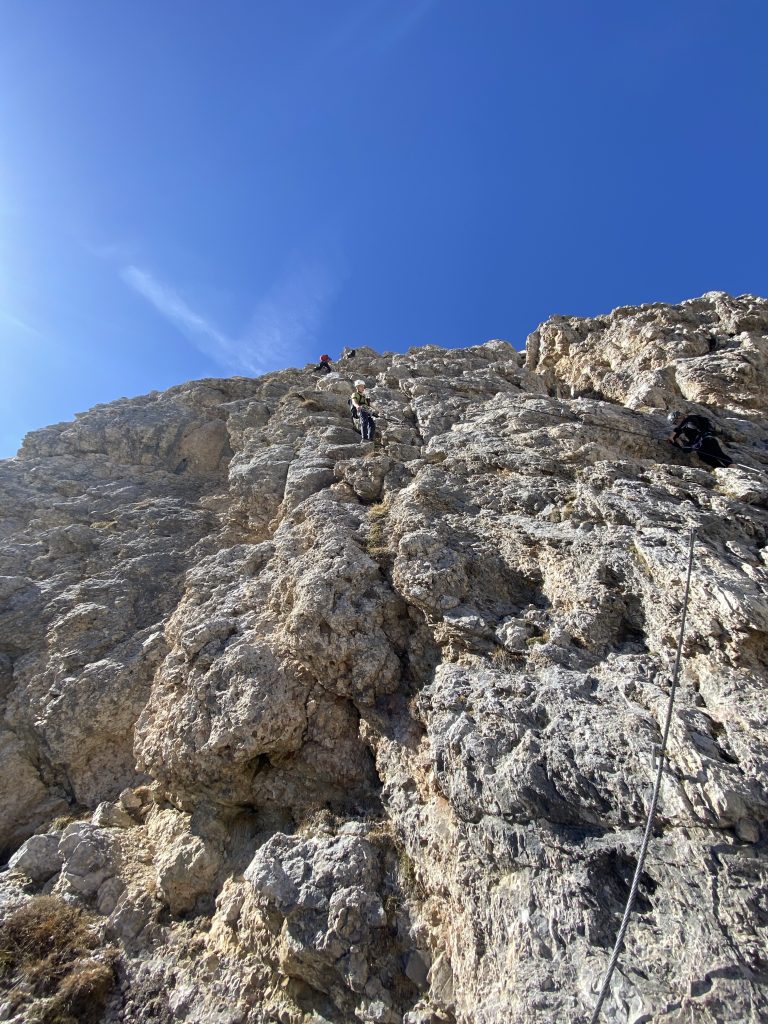
Food and Drinks
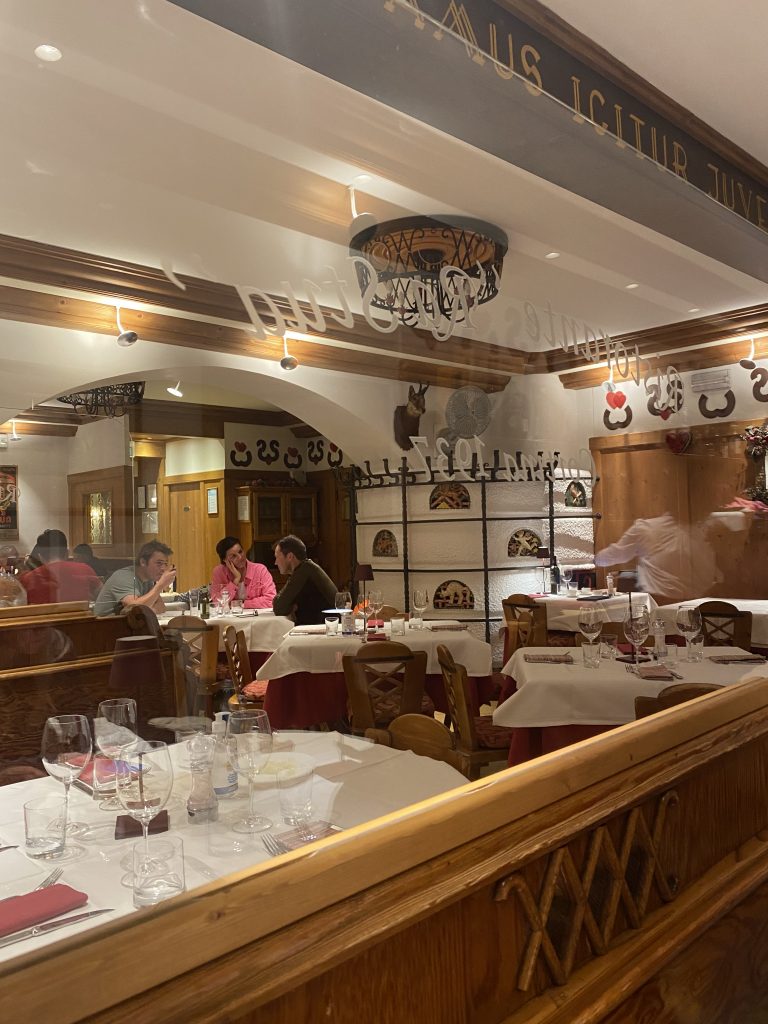
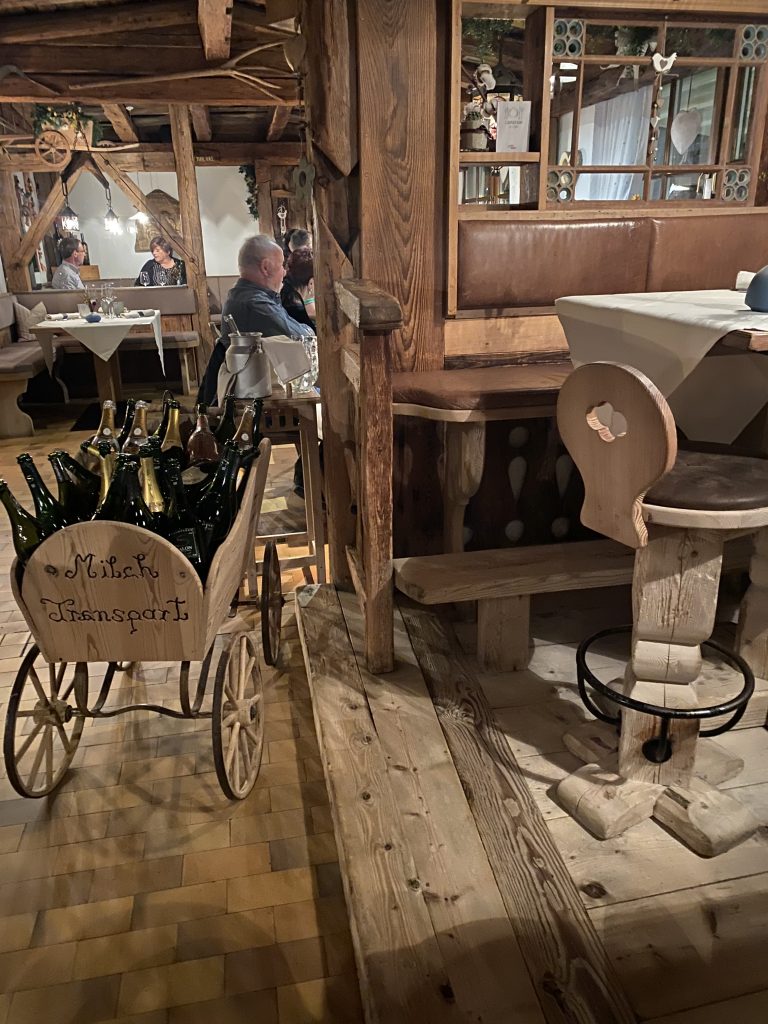
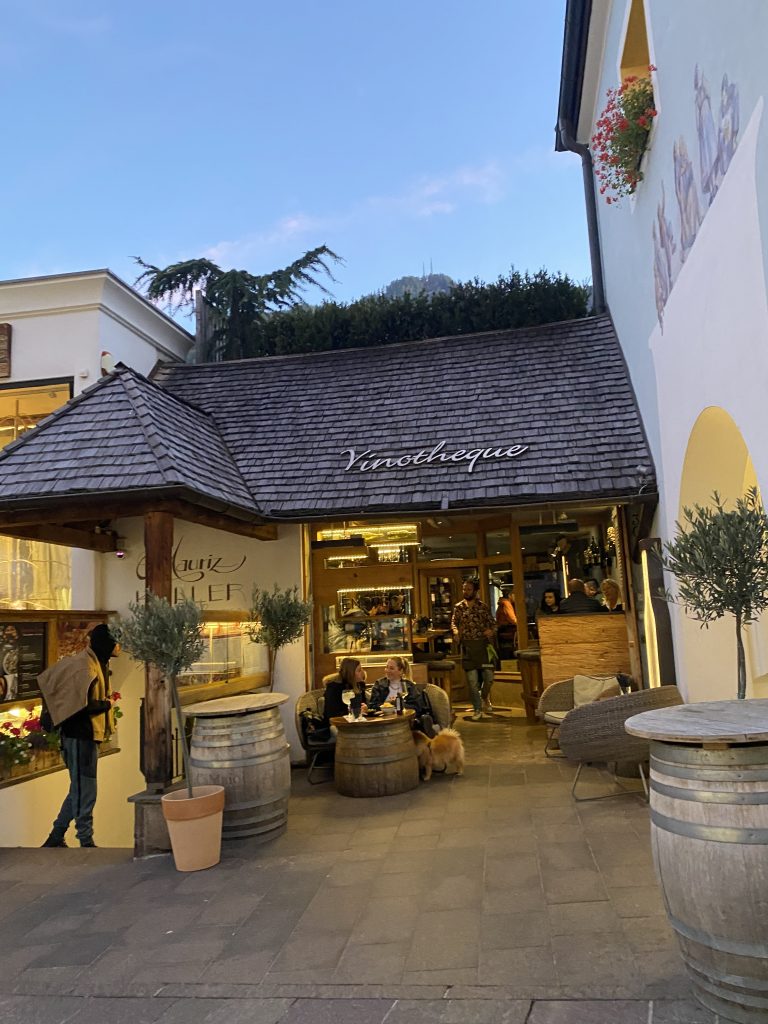
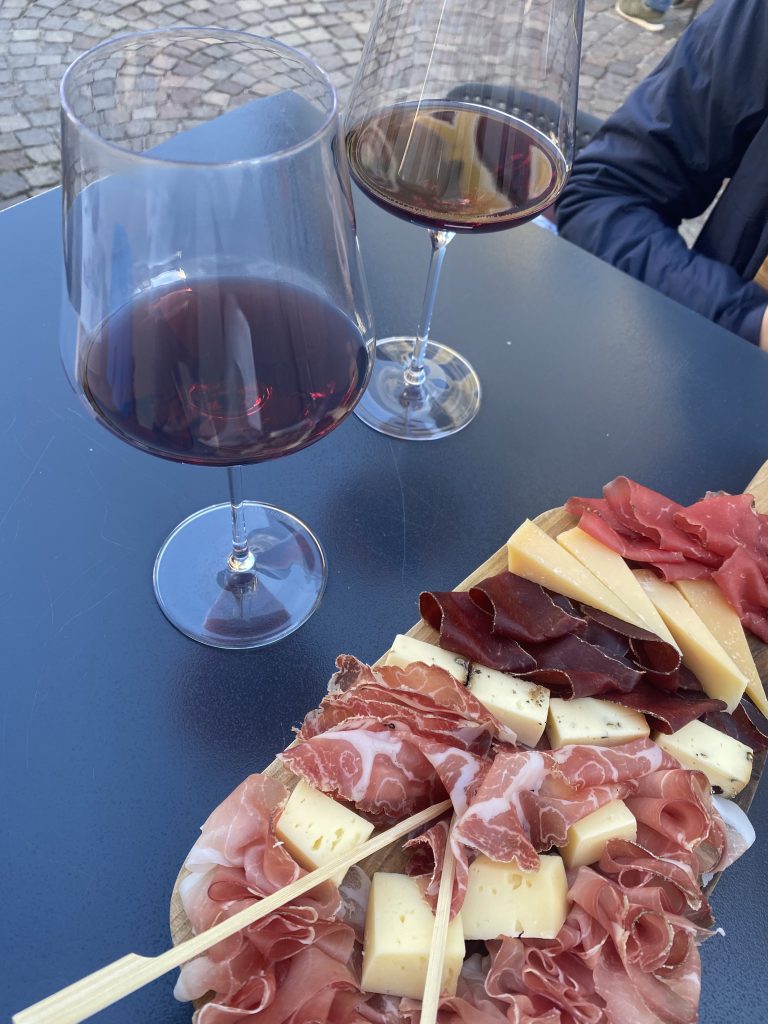
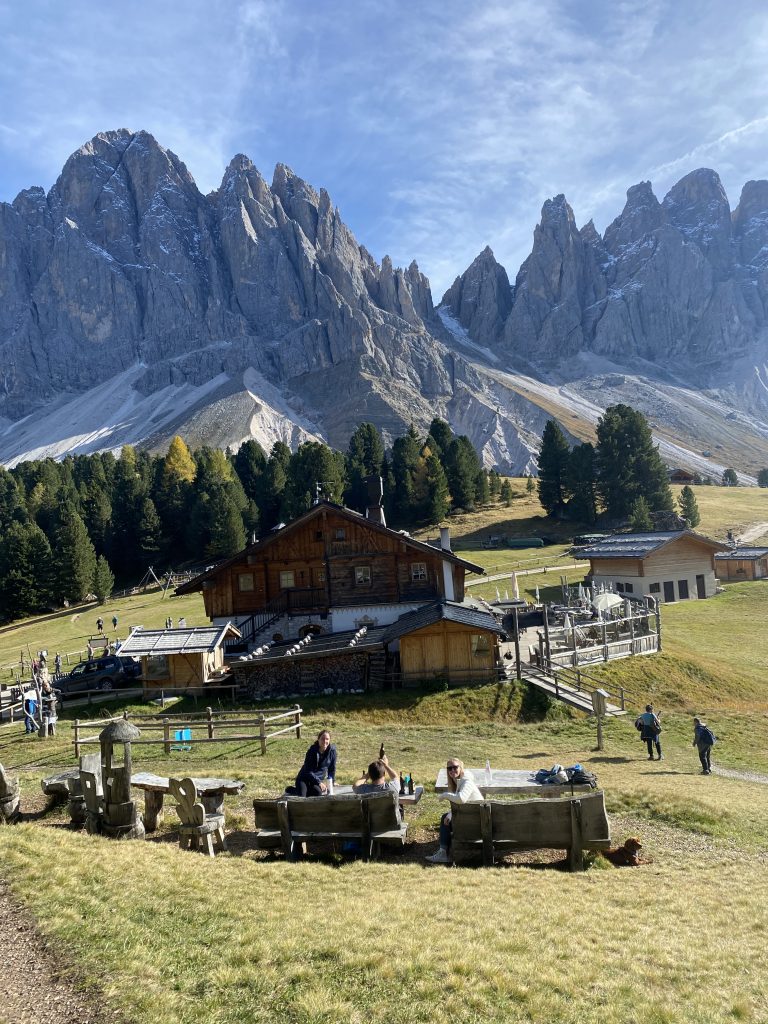
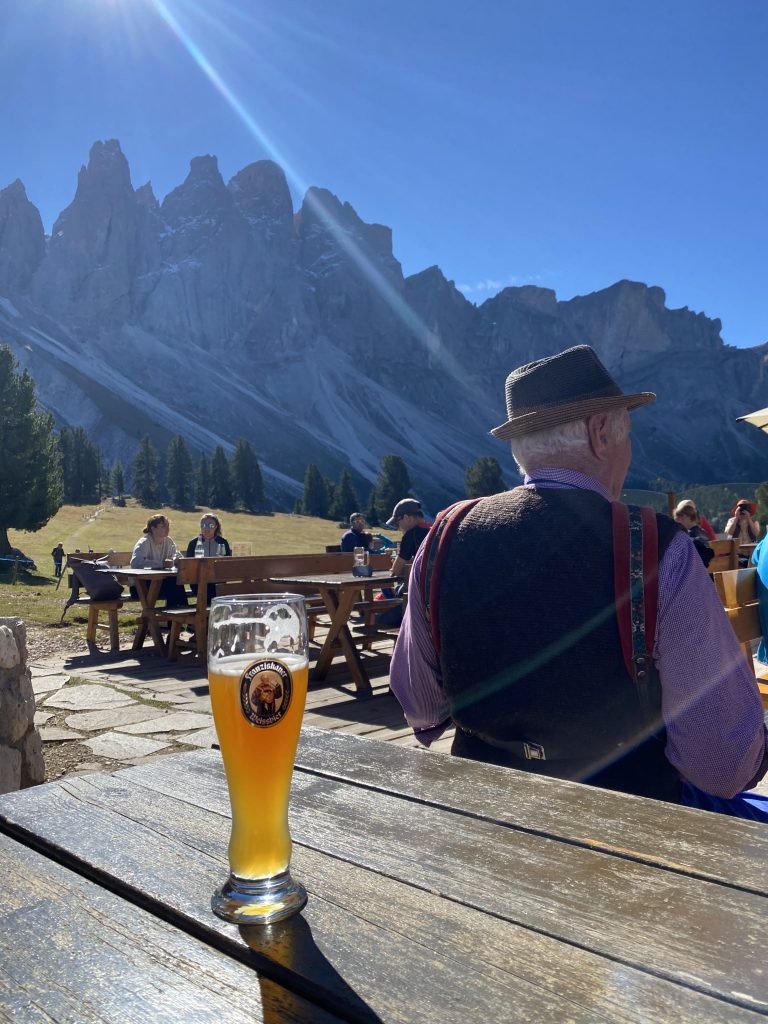
Dinner
Faloria Mountain Spa Restaurant
Location: Cortina d’Ampezzo
At the Faloria Mountain Spa resort about a 10 minute drive outside the Cortina d’ Ampezzo town centre, there is an excellent restaurant serving high quality and exquisite dishes. Although not at a cheap price, this restaurant is great for a fancier dinner with delicious food, a calming atmosphere, and high quality service.
Restaurant Ra Stua
Location: Cortina d’Ampezzo
Smaller restaurant just outside the main pedestrian central area in Cortina. The restaurant serves delicious food with a cross between Italian and German / Austrian food, offering many pasta dishes while also having a great selection of meats or larger secondi plates.
Tubladel
Location: Ortesei
Another upscale dining option, this time found on the edge of the Ortisei city centre, Tubladel has a cozy atmosphere. If visiting in high season, be sure to call in advance to book a table. The restaurant has German vibes and feels like a luxury cabin. The food here is excellent and is a great option for dining when in or around Ortesei.
Mauriz Keller
Location: Ortesei
Another well-known spot in Ortisei, Mauriz Keller is a bigger restaurant. It definitely has a mix of Austrian and German culture with its set-up and decor. The menu is very large, almost too large that leaves you questioning how good it can be. This was not our favorite meal, but provided some good dinner options and nice atmosphere.
Drinks
Vinoteque La Cercia
Location: Ortesei
Wine bar in the town centre with tables inside and outside for customers to enjoy wine and snacks
Caffe Corso des Senoner Moritz KG
Location: Ortesei
Cafe in the town centre with terrace and indoor seating. Grab a coffee and the apple crumble, a local speciality, or enjoy an aperol spritz on a sunny afternoon!
Avesani O.H.G.
Location: Ortesei
Wine and meat shop which sets-up tables outside on a nice day, offering charcuterie platters, snacks and wine.
Snacks
Tito Speck – Il Maso dello Speck
Location: Ortesei
This shop is a great spot to buy snacks to bring back to your accommodations and enjoy as appetizers and wine while preparing a meal
Lunch
While hiking, you will pass many rifugios. These rifugios often serve food or drinks if you fancy taking a break. A few notable rifugios to plan a stop at simply for their view are mentioned below.
Rifugio dell Odle
Location: Val di Funes
Sitting in the Puez-Geisler National Park, this rifugio is in one of the best locations, with spectacular views of the mountains around. The restaurant, Geisler Alm, has a lot of outdoor seating providing beautiful views of the mountain faces. It is especially nice in the afternoon when the sun is hitting the mountains. There are also a lot of wooden lounge chairs as well as tables and chairs on the side of the hill behind the rifugio, providing a great place to take a break with your packed lunch or snack.
Gschnagenhardt-Alm
Location: Val di Funes
Right near the Rifugio dell Odle, this rifugio also has an unbeatable location. The restaurant serves a variety of options such as Goulash and an apple pancake, both local specialities. Often an old man with an accordion will play music while guests enjoy their meals.
Almgasthof Mont Seuc
Location: Alps di Siusi
Sitting at the top of the Ortisei Alps di Siusi cable car, this restaurant provides a good spot for a drink or bite to eat after hiking around the Alps di Siusi plateau. Since the cable car closes in the early evening (the time of the last car down changes based on the time of year so be sure to ask or check this in advance), it provides a good spot to take a break before heading back down to the town.
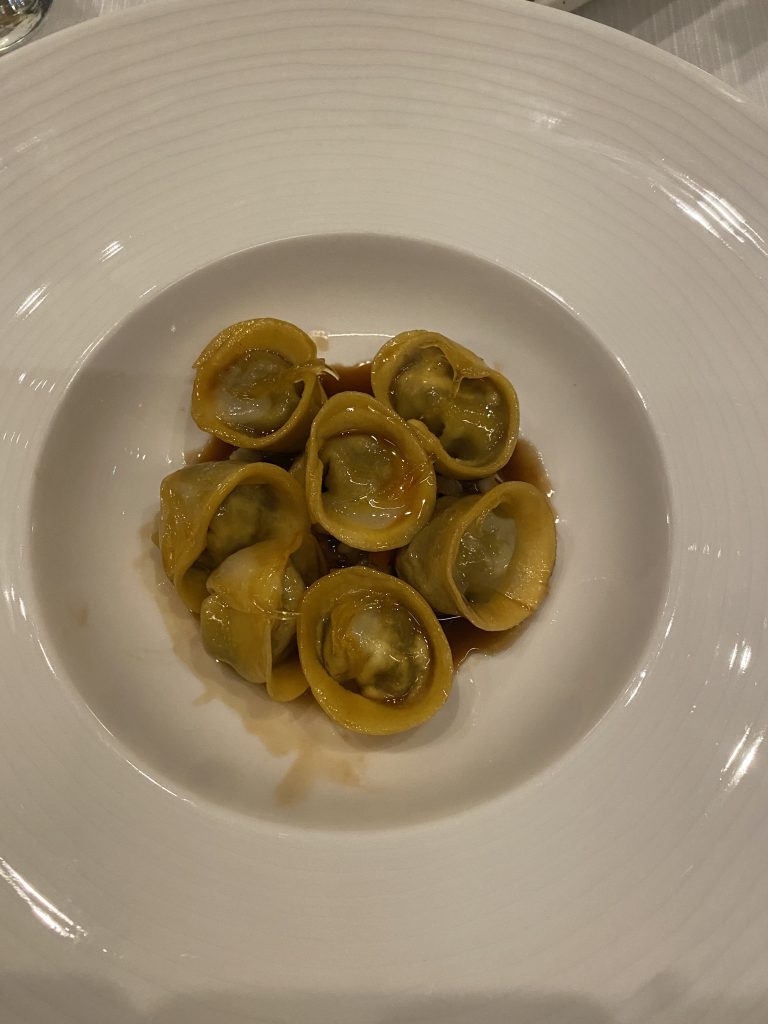
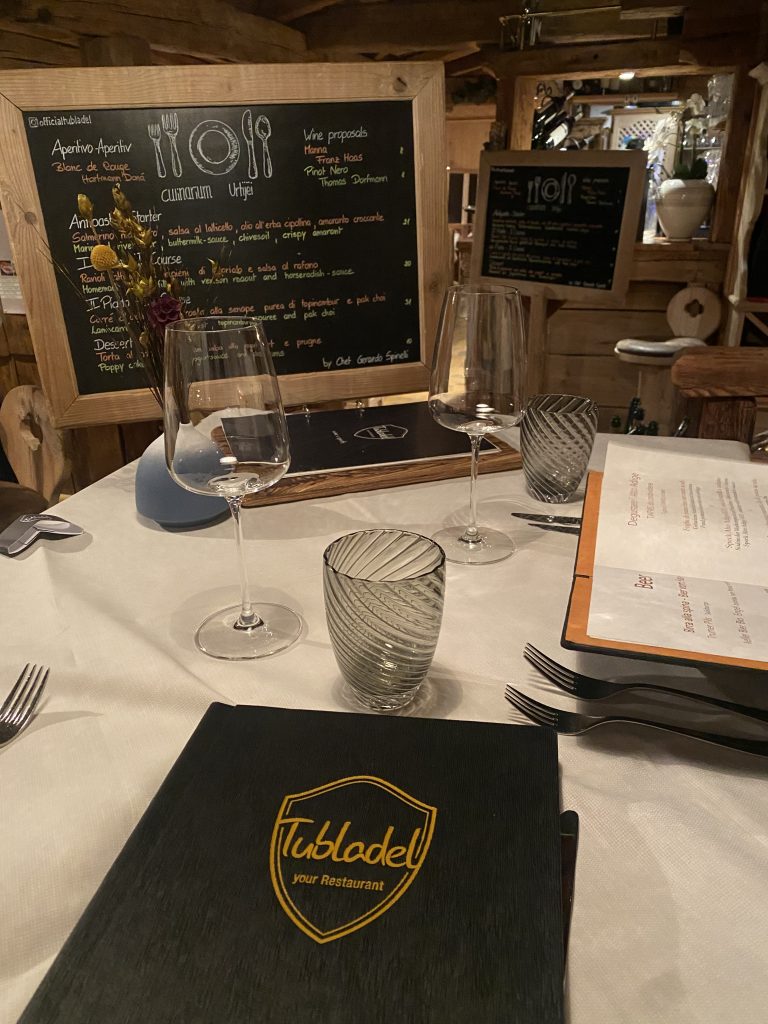
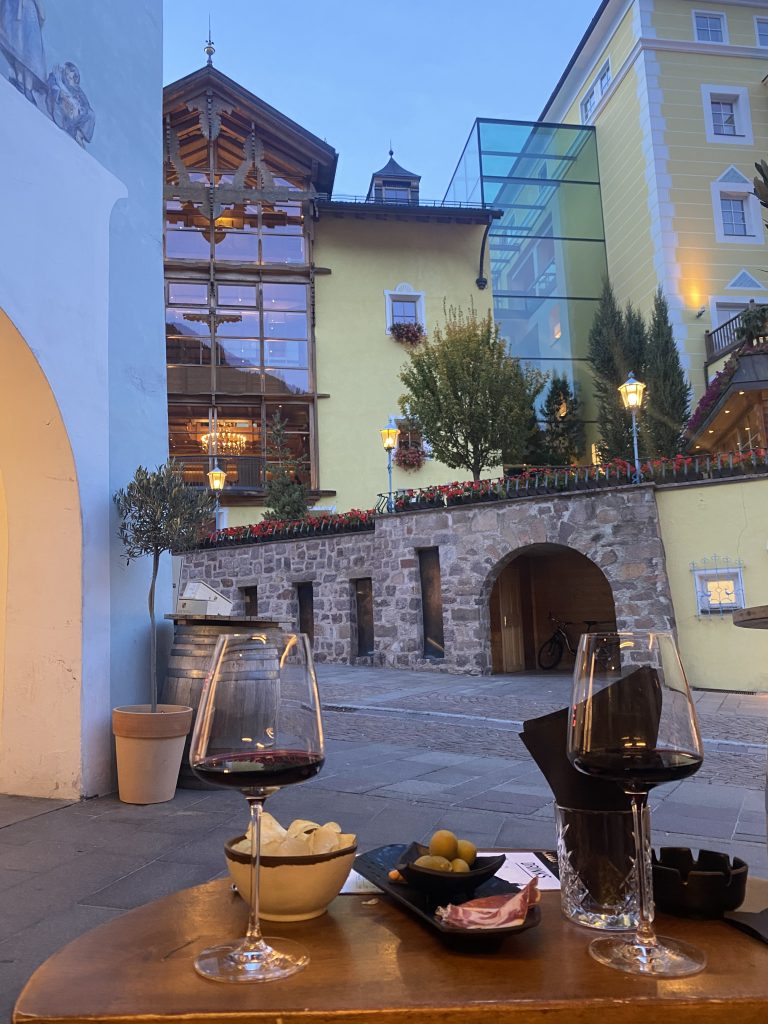
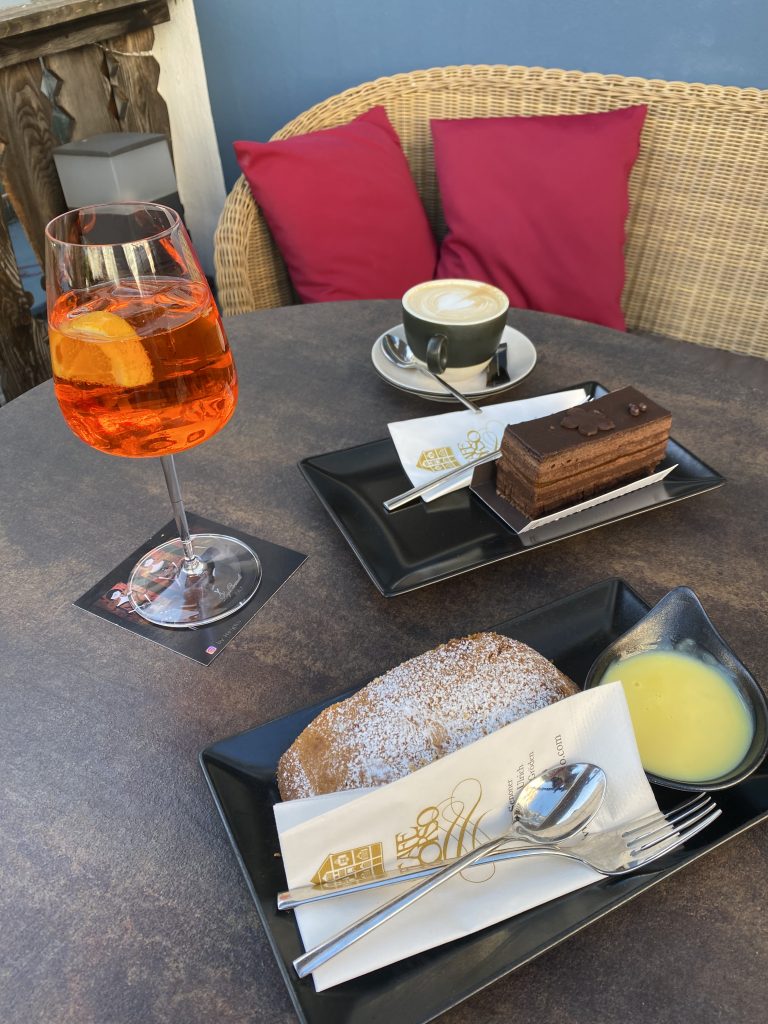
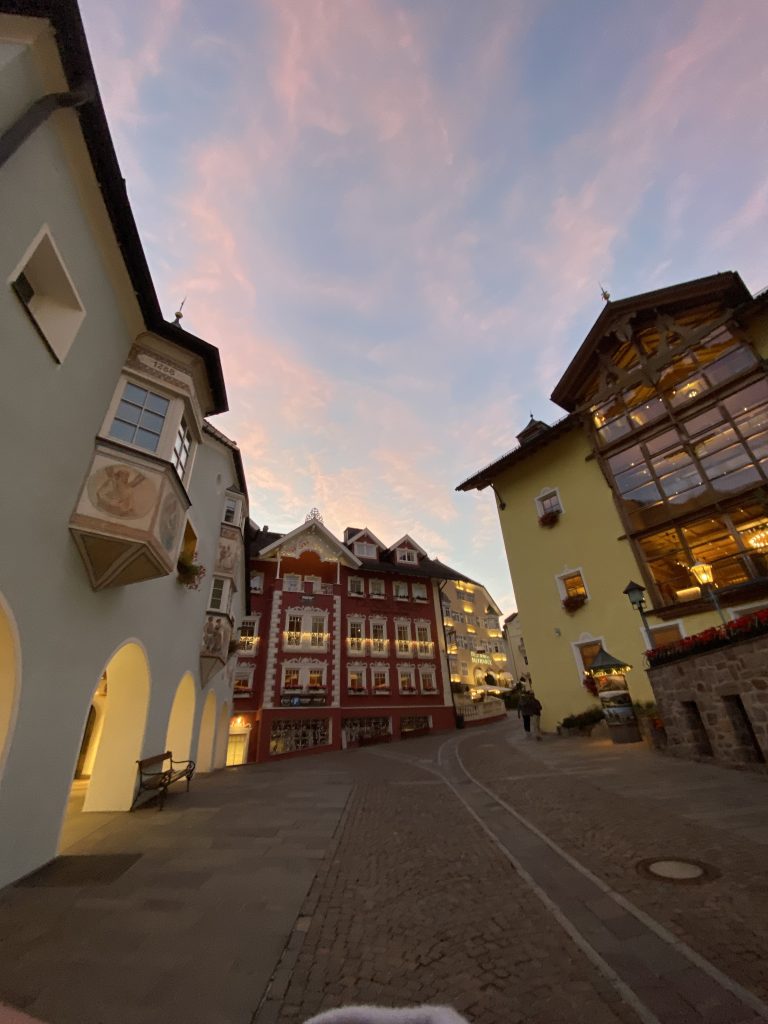
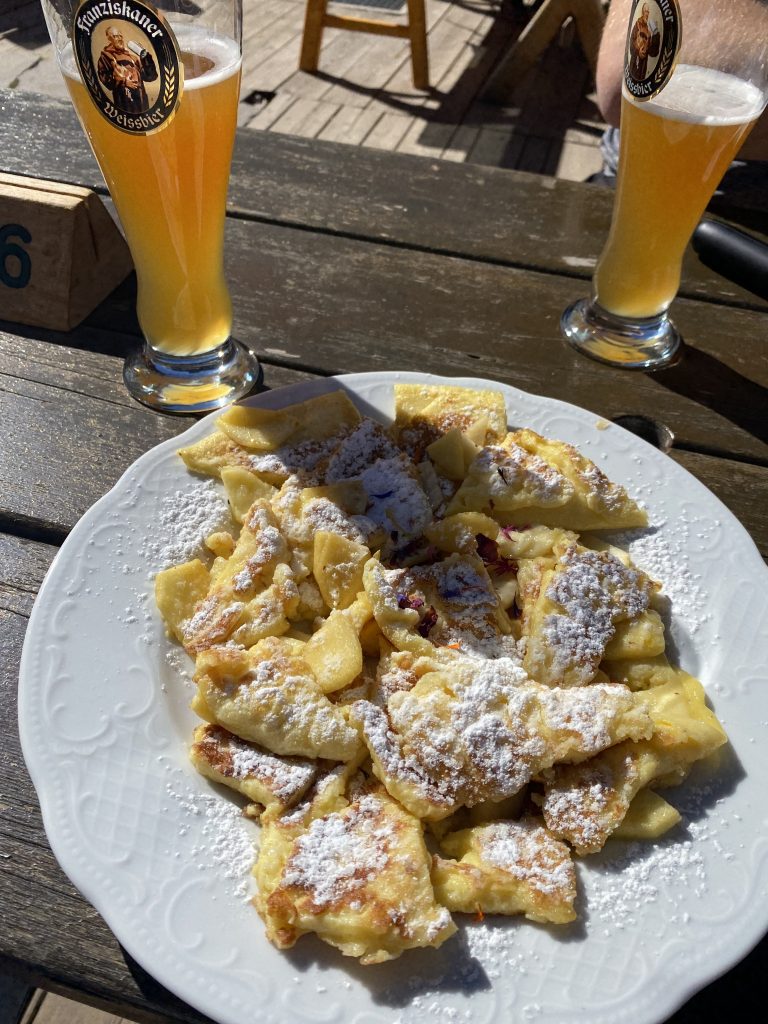
Other Notes
Duration
For first time visitors, plan around 7 days in the Dolomites. It would be easy to spend 2 weeks in the Dolomites, but understand this is not feasible for many. Thus, start with a week trip to get a good taste of what the Dolomites has to offer, and why it is such an underrated location to visit.
Traveling to the Dolomites only for a few days is not recommended. Due to the travel time to reach the Dolomites, only visiting for a few days does not make the most of your travels. Additionally, if only visiting for a few days, it is only feasible to cover a smaller area within the Dolomites as it would be a waste to spend time driving between multiple valleys on a short trip.
Weather
As the Dolomites are a mountain region, the weather is often questionable. The weather can change or be different than predicted largely because weather may not be able to pass across the mountains like it does in other areas. With this in mind, the summer season is typically known for having some of the best weather for the summer activities – hiking, paragliding, via ferrata, cycling, climbing and more. July and August will draw in the largest crowds and promise the best weather. However, do not rule out the shoulder months of June and September. These are well-known for typically having good weather and being less busy.
What to Pack
Layered Clothing – Be sure to pack clothes easy for layering. The mornings and evenings may get quite chilly while during the day it is very warm. Layers allow for lots of options, especially when also changing altitude and chance of both sunny and overcast days.
Headlamp – if considering hiking in the early morning or late at night, it is important to have a headlamp
Hiking backpack
Water bottles
Rain Jacket
Sleeping bag or sheets – this is important if staying in rifugios
Battery pack – helpful if dependent on your phone for routes or are unable to re-charge electronics at a rifugio
Hiking Boots
Blister bandaids
Hiking poles
Time of Year
High summer season: July and August
Shoulder summer season: June and September
Late May and late September / early October can be beautiful or may be risky in terms of weather conditions. Often, at these times, there is a higher likelihood of rain and overcast weather. That being said, it is not guaranteed. When visiting at the beginning of October, we lucked out and had PERFECT weather all week. We absolutely loved going at this time and nothing was very busy since it was out of peak season. However, this did mean there were more restrictions in venues being open – cable car times were adjusted, rifugios were closed for the season, and many huts which often serve food on trails were closed.
The recommended time to visit would be mid to late September as the rifugios would still be open as well as many huts. The hours of daylight are still quite long, but the crowds are reduced and the likelihood of bad weather is lower.
High winter season: mid December through March
In the winter, the Dolomites turn into a ski paradise. Including 12 different resorts, all on the Dolomites Superski pass, skiers can take advantage of the vast options as many are interconnected.
Languages
The South Tyrol region has its own language, largely only spoken in a few of the valleys known as Ladin. Additionally, most locals will speak Italian and German fluently, and have picked up other languages including English, French and Spanish due to increased tourism and visitors who travel to the region.
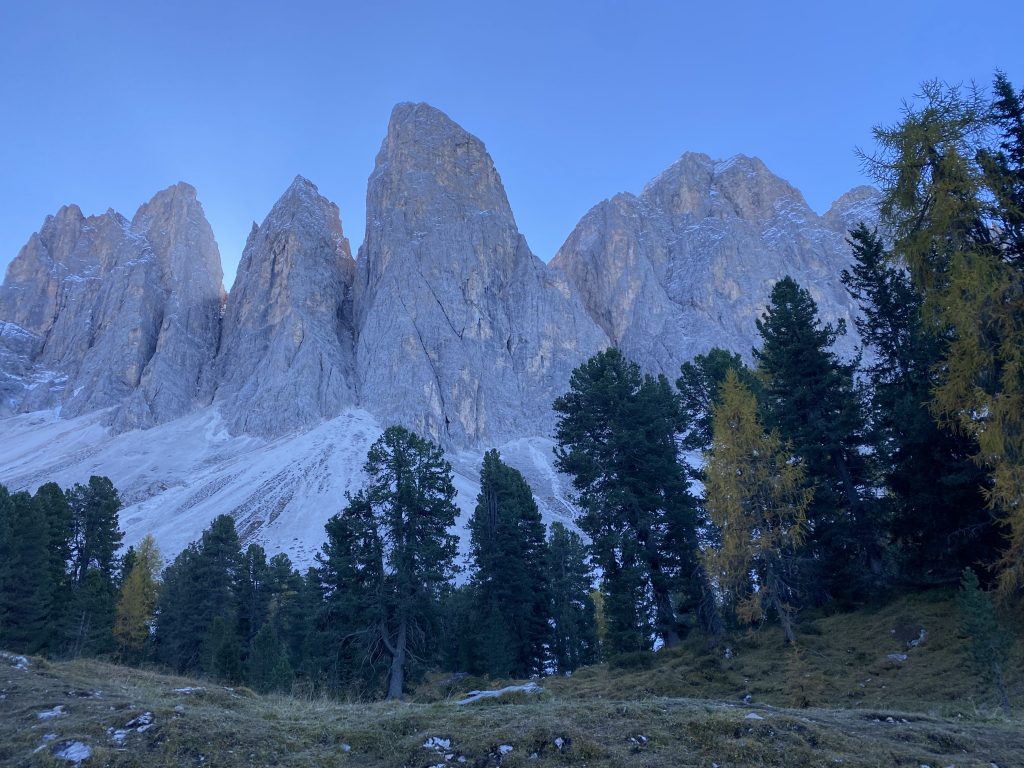
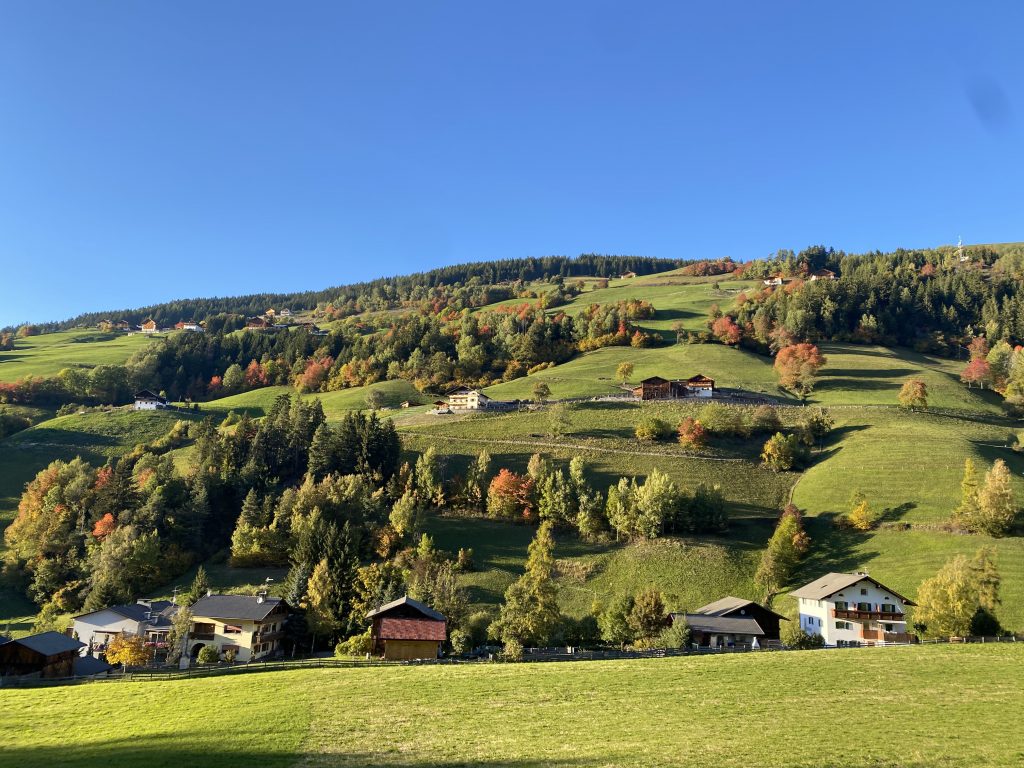
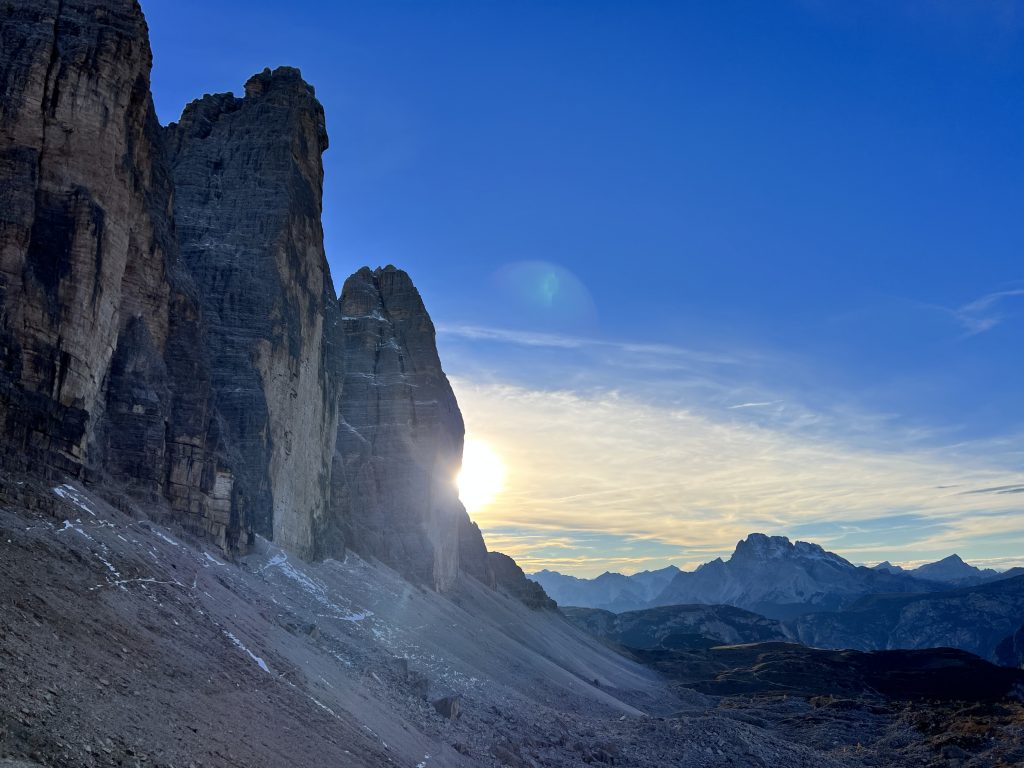
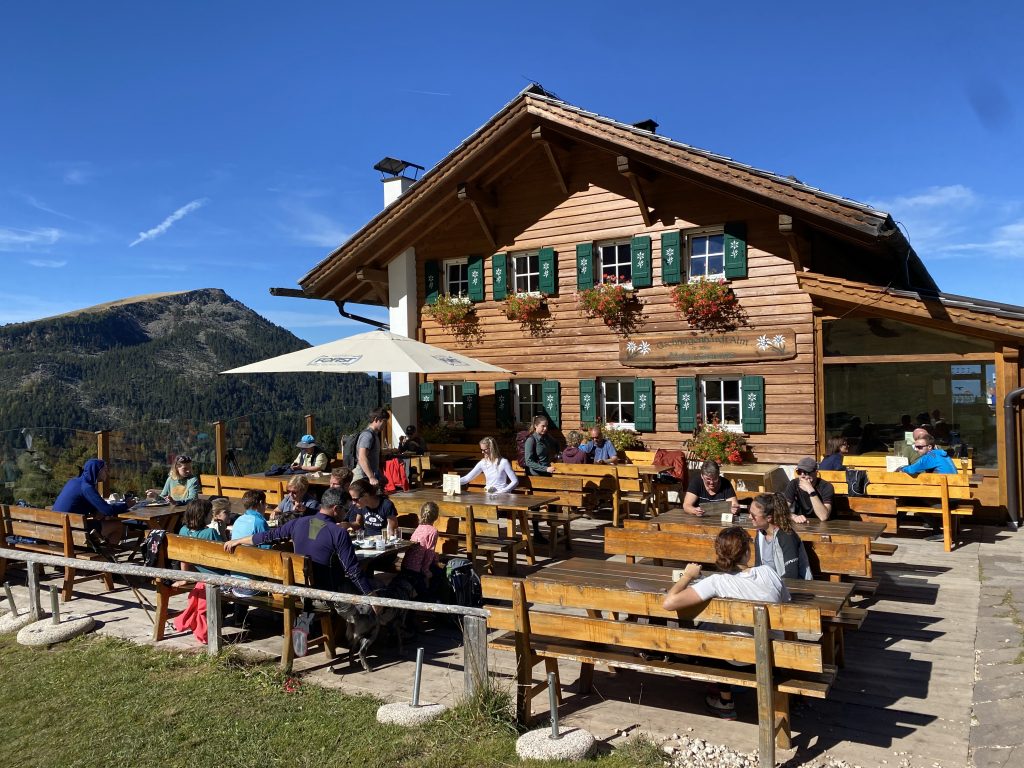
Navigation
Transportation and Accommodations
Things to do and see
Food and Drinks


